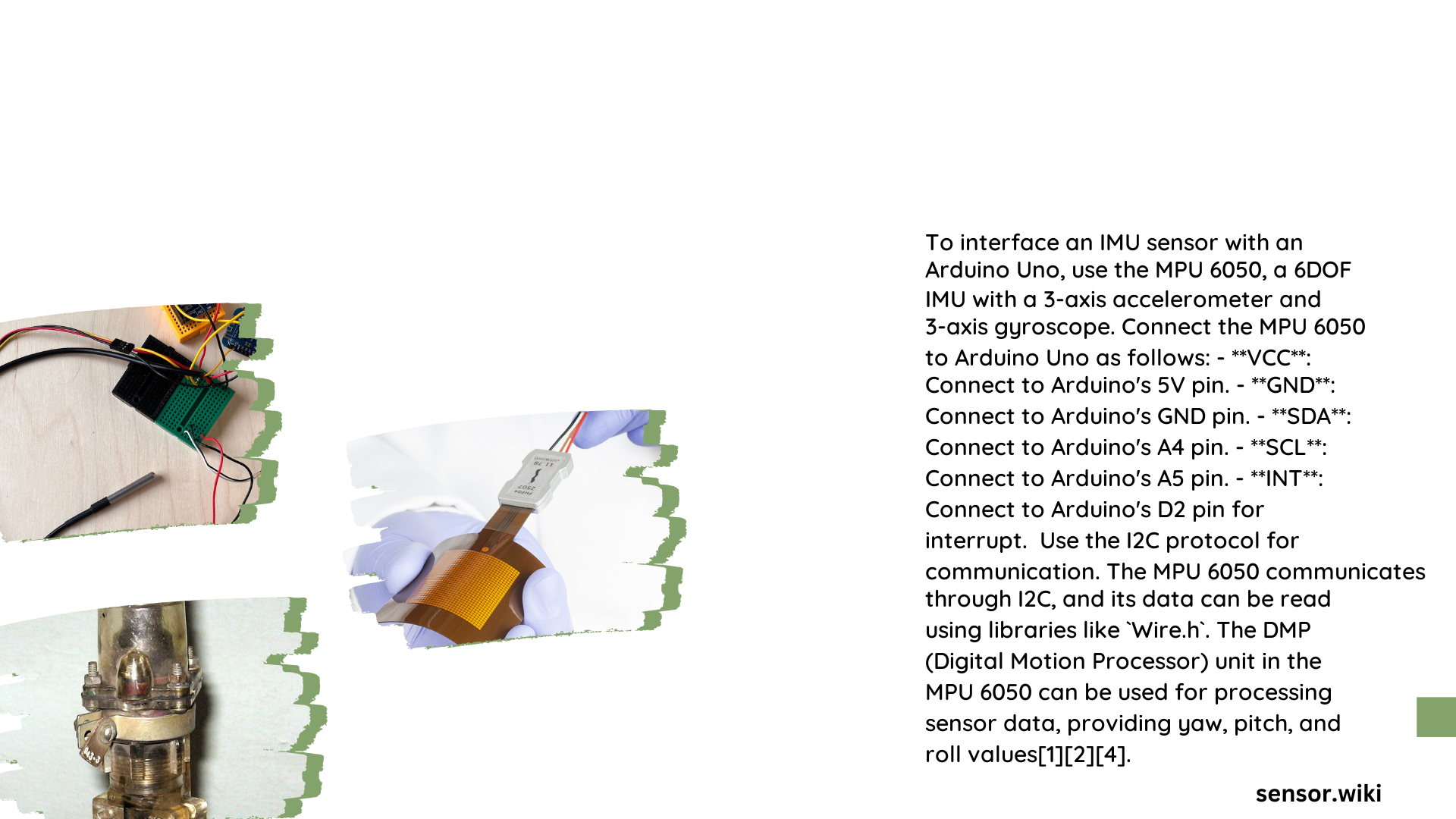IMU Sensor Arduino Uno: Comprehensive Exploration
The Inertial Measurement Unit (IMU) sensor, specifically the MPU6050, represents a powerful motion-tracking technology that enables Arduino Uno users to capture complex spatial movements and orientation data. This versatile sensor combines a 3-axis accelerometer and 3-axis gyroscope, providing comprehensive motion sensing capabilities for robotics, gesture recognition, and advanced motion tracking projects.
What Makes the IMU Sensor Essential for Arduino Projects?
Core Capabilities of MPU6050
- Acceleration Measurement: Detects linear motion across X, Y, and Z axes
- Gyroscope Functionality: Tracks rotational movements and angular velocities
- High Precision: Offers resolution up to 16-bit digital output
- Low Power Consumption: Ideal for battery-powered applications
How to Connect IMU Sensor to Arduino Uno?
Precise Wiring Configuration
| MPU6050 Pin | Arduino Uno Connection |
|---|---|
| VCC | 5V Power Supply |
| GND | Ground |
| SCL | Analog Pin A5 |
| SDA | Analog Pin A4 |
| AD0 | Optional Address Setup |
What Libraries Are Required for IMU Sensor Integration?
Essential Arduino Libraries
Adafruit_MPU6050Adafruit_SensorWire.hfor I2C communication
How to Write Basic IMU Sensor Code?
#include <Adafruit_MPU6050.h>
#include <Wire.h>
Adafruit_MPU6050 mpu;
void setup() {
Serial.begin(115200);
mpu.begin();
mpu.setAccelerometerRange(MPU6050_RANGE_8_G);
}
void loop() {
sensors_event_t acceleration;
mpu.getEvent(&acceleration);
Serial.print("X: ");
Serial.print(acceleration.acceleration.x);
Serial.println(" m/s^2");
delay(100);
}
What Advanced Projects Can You Create?
Project Ideas
- Robotic Stabilization System
- Use IMU for real-time balance correction
- Implement PID control algorithms
-
Suitable for self-balancing robots
-
Gesture Recognition Interface
- Detect specific hand movements
- Trigger actions based on motion patterns
- Potential applications in accessibility technologies
How to Calibrate the IMU Sensor?
Calibration Techniques
- Static Calibration: Measure sensor offsets during stationary periods
- Dynamic Calibration: Adjust readings during movement
- Temperature Compensation: Account for thermal variations
What Challenges Might You Encounter?
Common Troubleshooting Areas
- Noise Interference: Use low-pass filters
- Drift Correction: Implement complementary filtering
- Mounting Orientation: Ensure precise sensor alignment
Recommended Hardware Specifications
Optimal Components
- Microcontroller: Arduino Uno R3
- IMU Sensor: MPU6050 Module
- Communication: I2C Protocol
- Voltage Range: 3.3V – 5V
Performance Metrics
Sensor Specifications
- Accelerometer Range: ±2g to ±16g
- Gyroscope Range: ±250°/s to ±2000°/s
- Resolution: 16-bit digital output
- Sampling Rate: Up to 1 kHz

